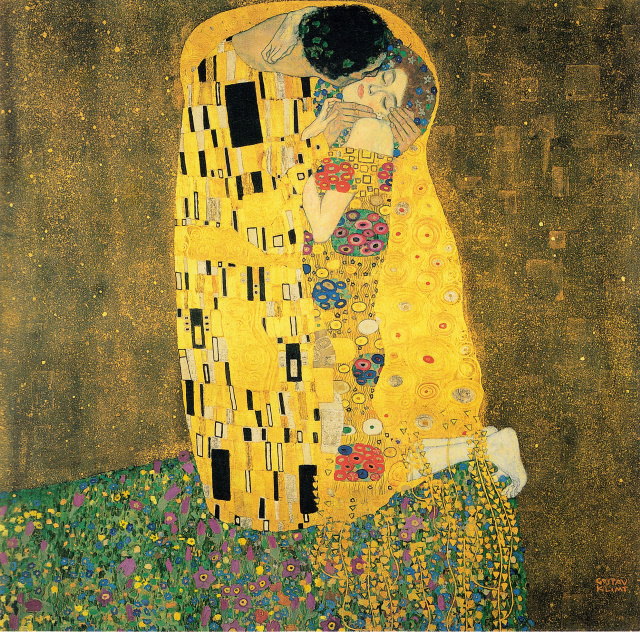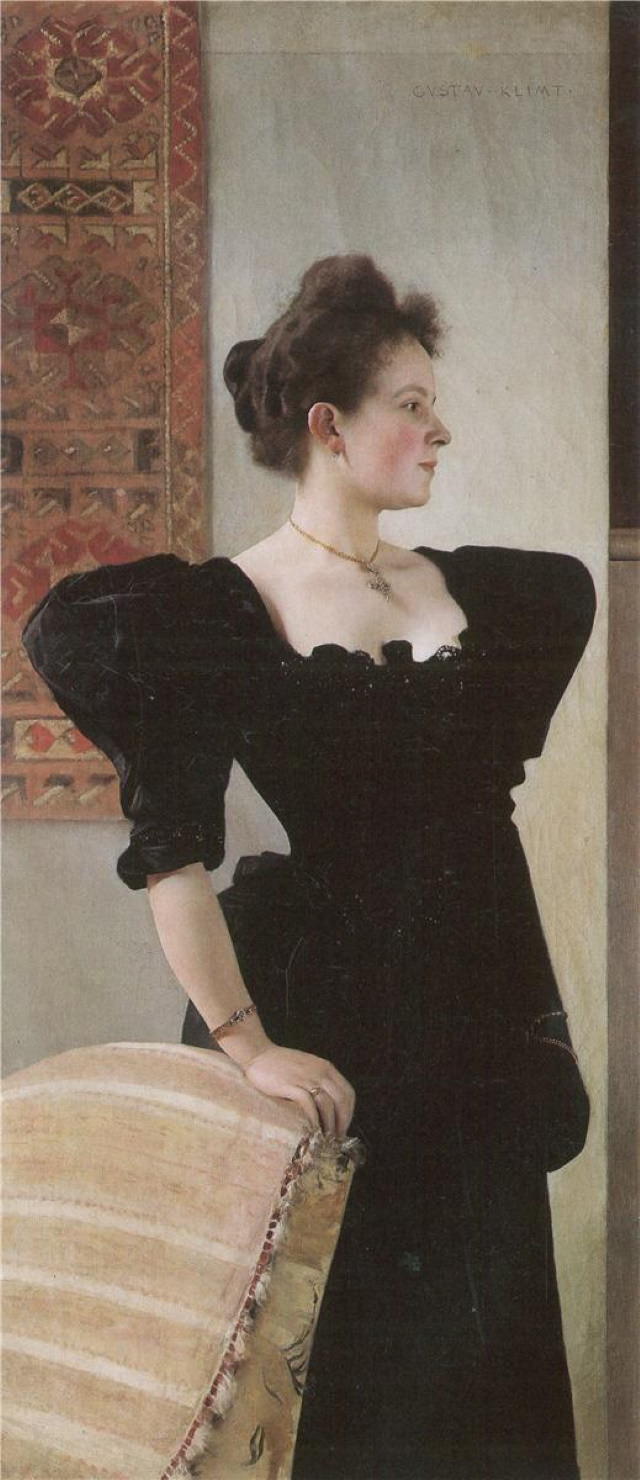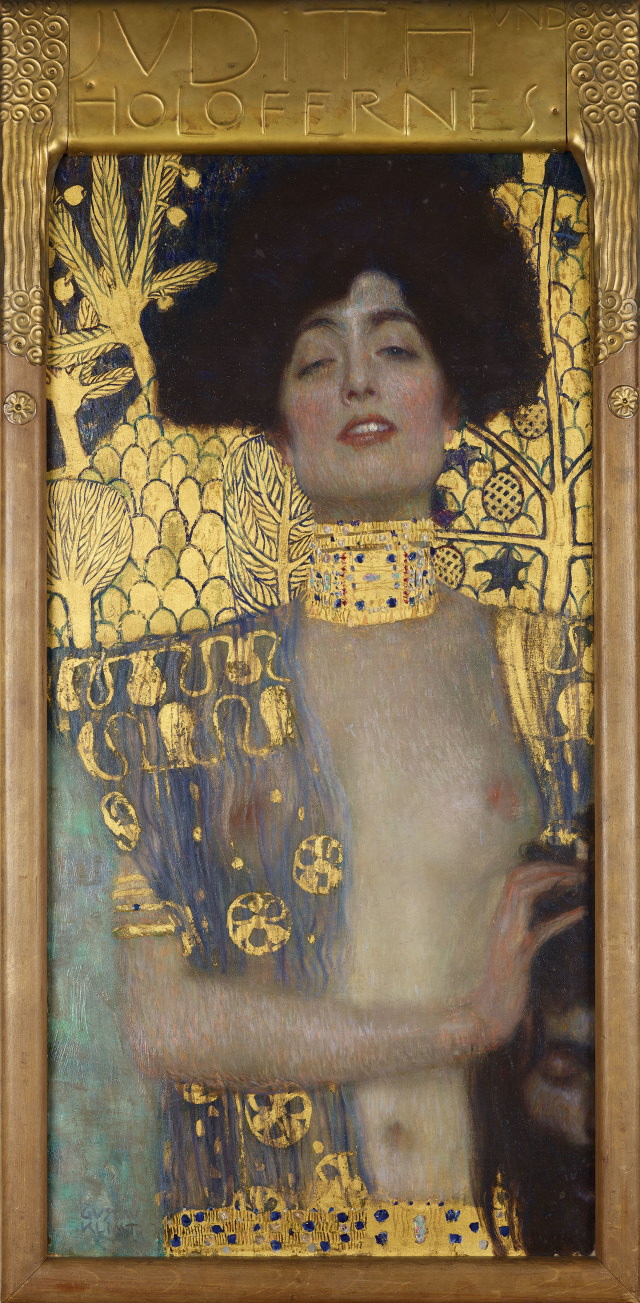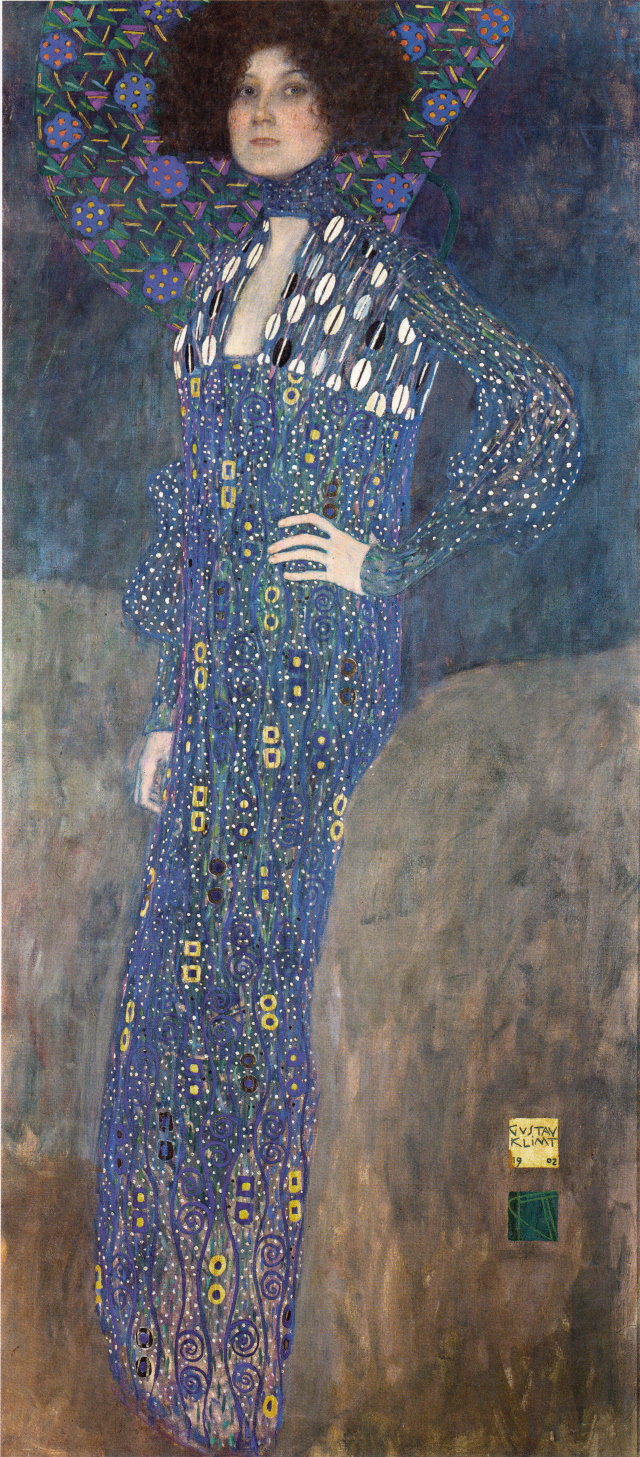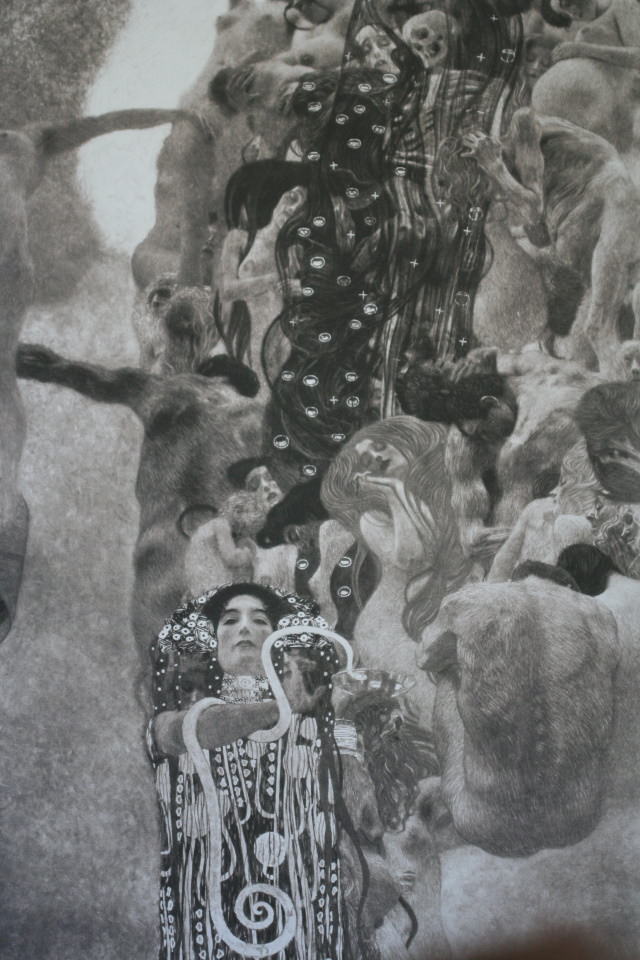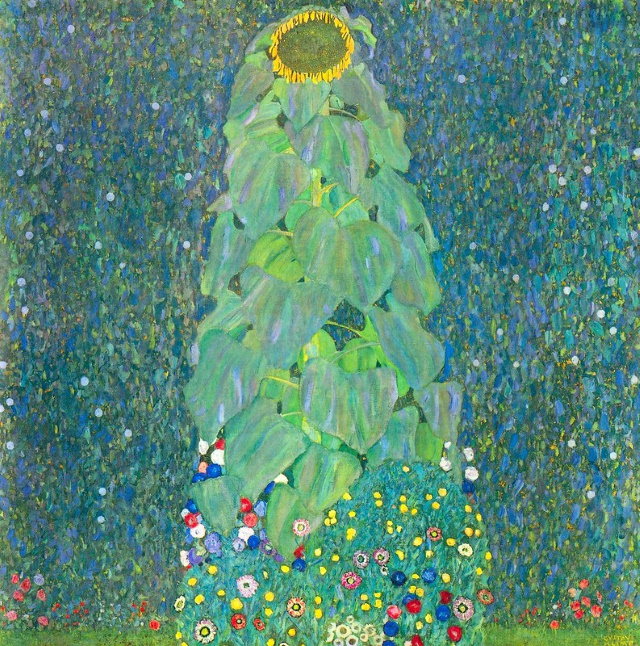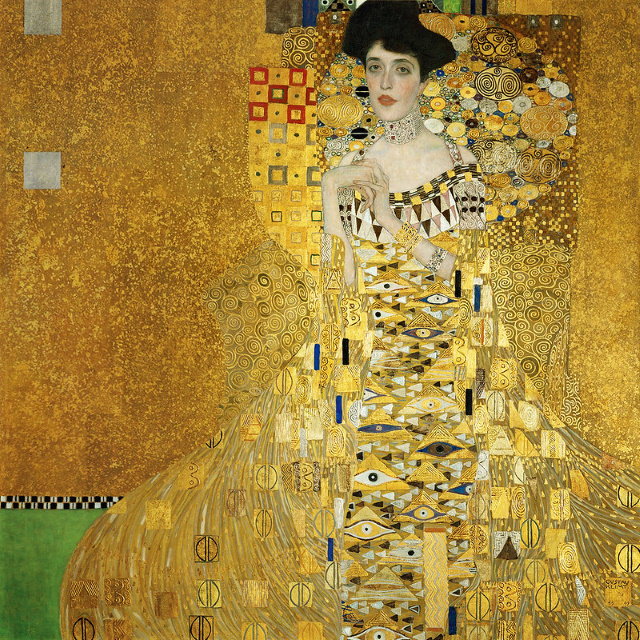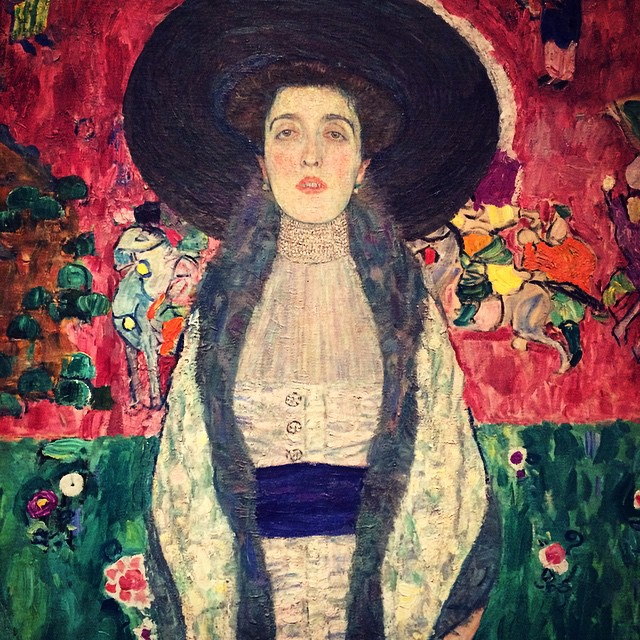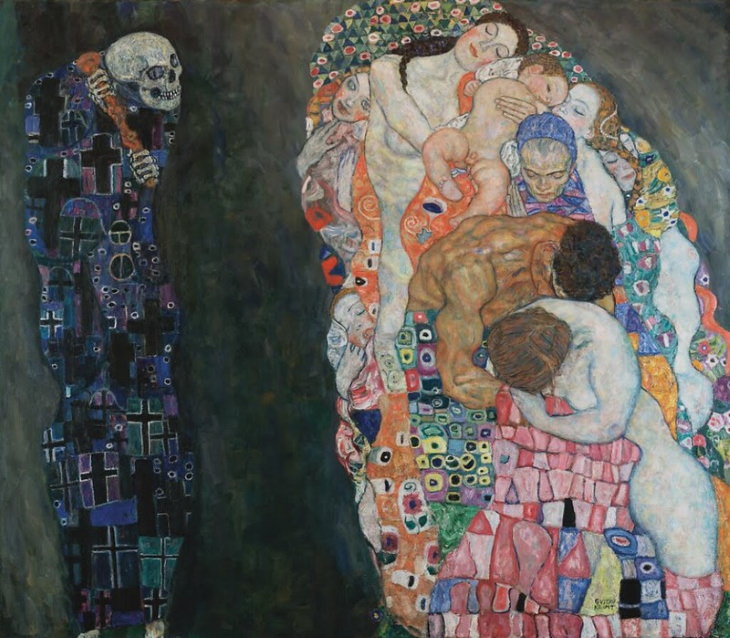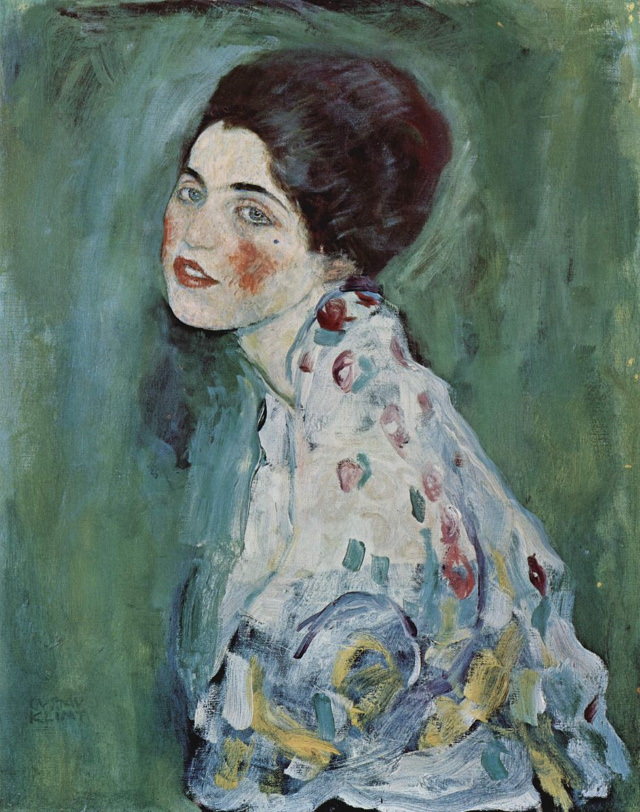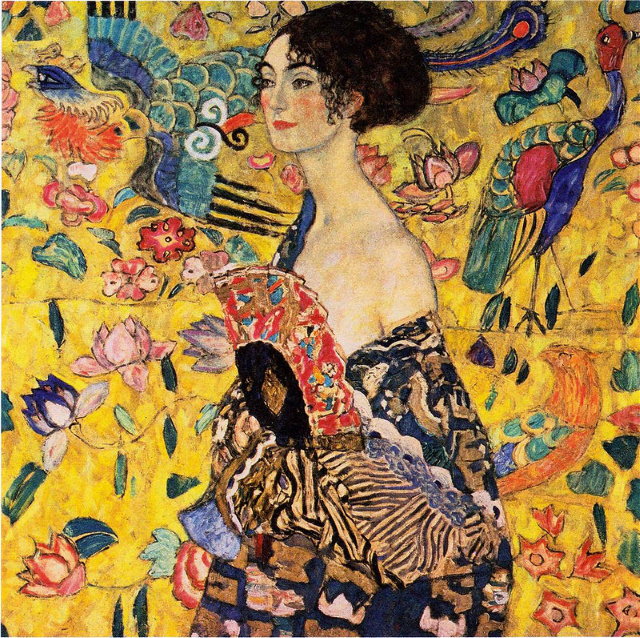The Kiss (1907 - 1908)
Two of Gustav Klimt’s most famous artworks and the paintings that granted him critical acclaim at the beginning of the 20th century - the Portrait of Adele Bloch-Bauer I and The Kiss (above) - belong to the artist’s golden phase. In fact, the liberal use of gold leaf has become Klimt’s signature. The artist’s use of the precious metal is no coincidence, as young Gustav grew up in a goldsmith’s family.
Portrait of Marie Breunig (1894)
Gustav Klimt was born on July 14, 1862, in the village of Baumgarten, now part of Vienna. He was the second of Anna and Ernst Klimt’s seven children. Following in his father’s footsteps, all three of the Klimt sons were artistically gifted. Despite the family’s financial struggles, Gustav enrolled at the University of Applied Arts of Vienna in 1876. Early on, Gustav’s talent caught the eye of Hans Makart, Vienna's foremost history painter.
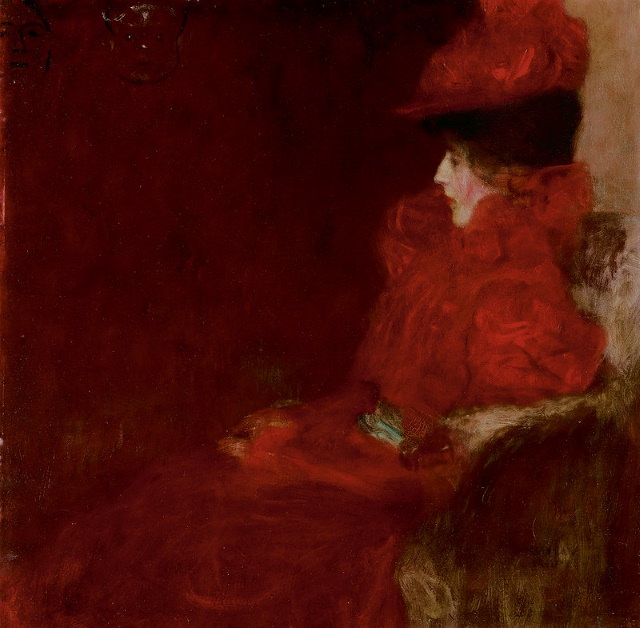
Throughout the 1880s and early 1890s, Klimt completed several commissions for murals in Vienna. At this time, he started working on portraits of women, Klimt’s favorite subject throughout his career. In these early portraits, we can already observe the characteristic symbolism and composition that will define Klimt’s artistic style in the years to come.
In 1898, Klimt painted the first piece that would define his style called Pallas Athene. This is a stunning depiction of Athena, the Greek goddess of war, as a powerful and stoic figure embellished in gold armor.
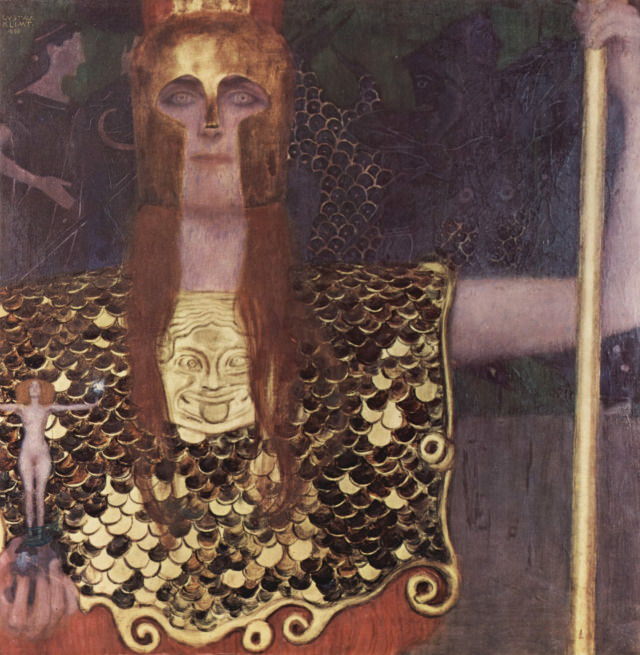
Pallas Athena (1898)
At this time, Klimt also meets Emilie Louise Flöge, an Austrian fashion designer and his lifelong companion. Although not the only woman in Klimt’s life (the artist is said to have fathered at least 14 children to different women), Flöge was a strong inspiration in the artist’s life.
Judith and the Head of Holofernes (1901)
Flöge created costumes for Klimt’s paintings and modeled for him on several occasions. Notably, she appears in several key paintings by Klimt - from Judith and the Head of Holofernes (below) to The Kiss, which is believed to be a depiction of Emilie and Gustav as lovers.
Portrait of Emilie Louise Flöge
The verge of the 19th and 20th centuries was a fascinating time in Vienna. Writers, artists, musicians, architects, and philosophers the likes of Sigmund Freund and Otto Wagner all lived together at the same time, often working in the same spaces and visiting the same cafés.
From this multidisciplinary bunch of people, fed up with the rigid norms of the time, a group of young artists emerged with novel ideas. Inspired by the Preraphaelites, Japanese Art, and the developing Art Nouveau movements, these artists resigned from the Association of Austrian Artists in the hopes of creating a brand new revolutionary style.
The Beethoven Frieze: The Hostile Powers. Far Wall (1902)
Following in the footsteps of the already existing Berlin and Munich Secession, these artists proclaimed themselves as the Wiener Sezession (Vienna Secession) in 1897, with Klimt as one of the founding members and the president.
It is during this time that Klimt paints some of his most iconic paintings - from the mural lining the Secession building called the Beethoven Frieze to the now sadly destroyed triptych Philosophy, Medicine, and Jurisprudence, which he created for the University of Vienna.
Klimt’s peers and inner circle of sponsors supported his increasingly ornamental, symbolic, and bold style. But the response of the public was negative because Klimt chose to depict female nudity in a way that was deemed indecent. The University of Vienna refused to accept Philosophy, Medicine, and Jurisprudence.
In reaction to the public humiliation, Klimt resigned from the Secession and refused to take any new public commissions. To make ends meet, he started working with private clients only, mainly the female members of the Viennese high society. Free of the burdens of public approval, the artist becomes even more experimental.
The flood of portrait commissions ushered in the golden age of the artist’s career, both literally and metaphorically. The pinnacle of Klimt’s career occurred in 1907 when he painted the Portrait of Adele Bloch-Bauer I (below), a wealthy Viennese woman.
Adele Bloch-Bauer I (1907)
The painting is an explosion of gold and ornamental motifs that surround the delicate figure of the subject like a luxurious gown. To this day, this painting, along with the second portrait of Adele Bloch-Bauer (below), which the artist finished in 1912, is among the most expensive and prized masterpieces in the world.
At this time, Klimt also created many landscapes that can be characterized as just as refined and meticulous as his portraits.
In the years to follow, we can observe more Japanese motifs in Klimt’s art, as can be seen from the last two portraits we showcase in this collection. Tragically, many of these colorful and cheerful images from 1917-1918 remain unfinished.
When the Spanish Flu epidemic struck Vienna in 1918, the genius artist, then only 55 years old, passed away from the complications of influenza and an unexpected stroke.
Porträt einer Dame (1917)
Gustav Klimt didn’t leave a biography or journal to remember him by, but his legacy lives on through his paintings. As Klimt once said, "I have never painted a self-portrait. I am less interested in myself as a subject for a painting than I am in other people, above all women... There is nothing special about me. I am a painter who paints day after day from morning to night ... Whoever wants to know something about me ... ought to look carefully at my pictures."
Share this article with those who enjoy art

